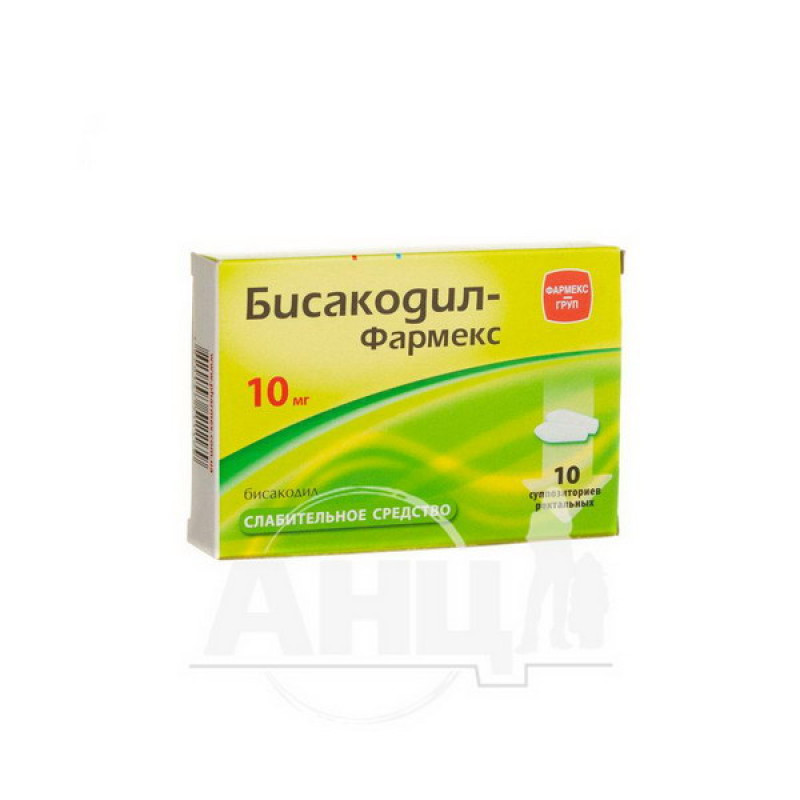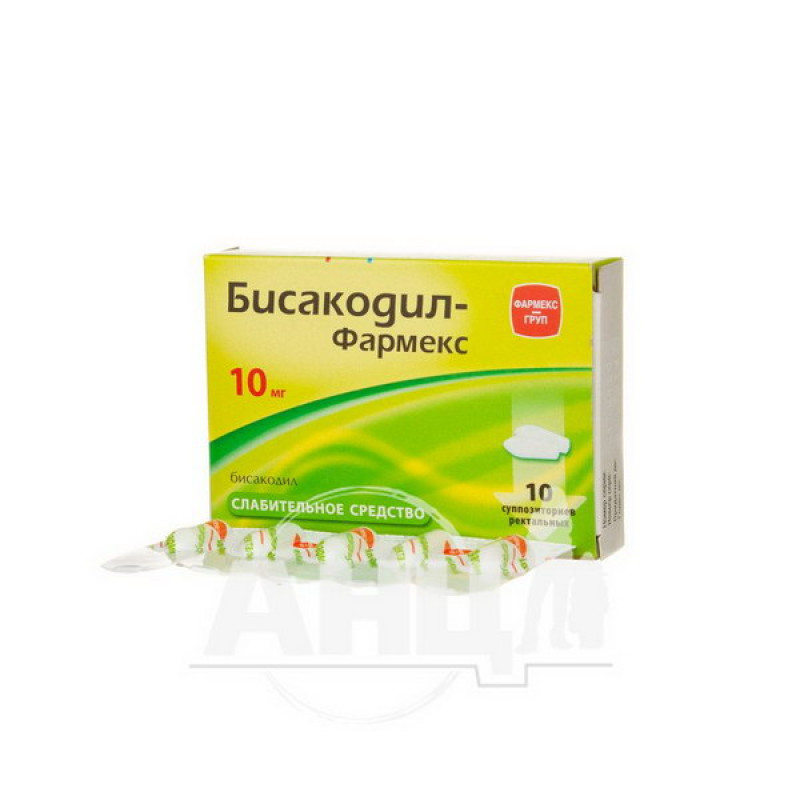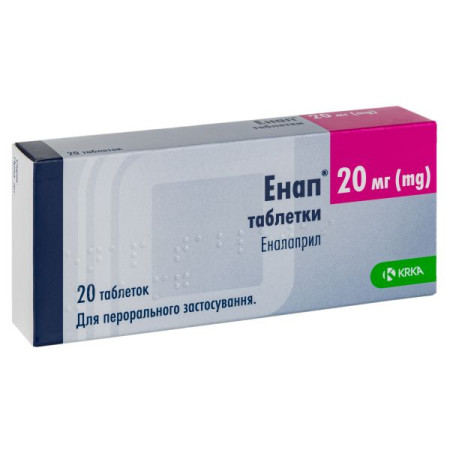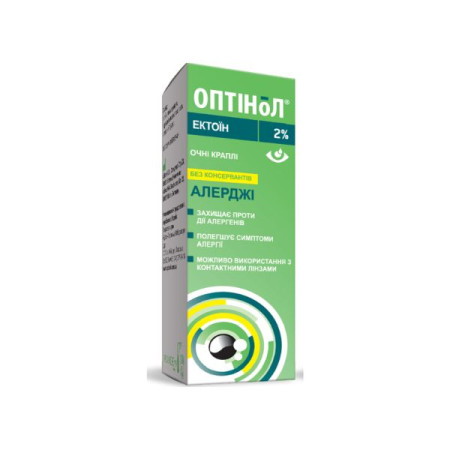Bisacodyl-Pharmex rectal suppositories 10 mg strip No. 10

Translation of the instructions can be
Bisacodyl-PHARMEX rectal suppositories 10 milligramsInstruction
For medical use of the medicinal product
Bisacodyl-Pharmex
(Bisacodyl-pharmex)
Composition:
Active ingredient: bisacodyl;
1 rectal suppository contains 10 mg of bisacodyl;
excipients: hard fat, microcrystalline wax.
Dosage form.
Rectal suppositories.
Main physicochemical properties: smooth suppositories from white to cream color. There are no inclusions on the longitudinal section, the presence of a funnel-shaped depression and an air core is allowed.
Pharmacotherapeutic group.
Contact laxatives. ATS code a06a B02.
Pharmacological properties.
Pharmacodynamics.
Bisacodyl is a laxative that stimulates colonic peristalsis by irritating the mucosa or by direct stimulation of nerve endings in the submucosal and mucous nerve plexuses.
Pharmacokinetics.
Bisacodyl is poorly absorbed from the gastrointestinal tract, in addition, it itself affects the absorption of electrolytes. As a result, increased osmotic pressure in the intestinal lumen retains more water, as a result of which the stool softens and facilitates its passage through the colon. In addition, the volume of the stool increases, which stimulates peristalsis and facilitates defecation.
Bacterial enzymes in the colon metabolize bisacodyl to the active compound, a diphenol, which is conjugated with glucuronic or sulfuric acid during the first pass through the liver and returned to the intestine via enterohepatic circulation. This process prolongs the action of the drug.
Absorption of bisacodyl after intrarectal administration is minimal. Absorbed bisacodyl is deacetylated in the liver to form a phenolic derivative, which is subsequently excreted in the urine. The portion remaining in the colon is excreted in the feces.
Clinical characteristics.
Indication.
Short-term symptomatic treatment of constipation, including habitual constipation and chronic constipation in bedridden patients and elderly patients; before diagnostic procedures, surgical and obstetric interventions, as well as in the pre- and postoperative period.
Contraindication.
Hypersensitivity to bisacodyl and other components of the drug. Intestinal obstruction. Acute diseases of the abdominal organs, including appendicitis and acute inflammatory diseases of the intestine. Severe abdominal pain associated with nausea and vomiting, which may indicate the above-mentioned severe conditions. Severe dehydration.
Anal fissures or ulcerative proctitis with mucosal damage.
Interaction with other drugs and other types of interactions.
Bisacodyl enhances the action of cardiac glycosides by reducing serum potassium levels. It also enhances the kaliuretic effect of diuretics and glucocorticoids.
Application features.
duration of treatment
As with other laxatives, bisacodyl should not be used continuously for more than 5 days without determining the cause of constipation. Prolonged and excessive use of the drug may cause electrolyte and fluid imbalance, as well as hypokalemia.
Fluid loss in the intestines
Loss of fluid in the intestines can cause dehydration, symptoms of which may include thirst and oliguria. In patients suffering from loss of fluid in the intestines, which can cause dangerous dehydration (e.g., in renal failure, elderly patients), the use of bisacodyl should be discontinued and restarted only under medical supervision (see section "Adverse reactions").
indigestion
There have been isolated reports of abdominal pain and bloody diarrhoea following the use of bisacodyl. Individual cases have been associated with ischemia of the colonic mucosa. Some patients may experience blood in the stool, which is generally mild and does not require treatment (see section "Adverse reactions").
Dizziness, syncope
Patients taking bisacodyl may experience dizziness and/or syncope.
From the available information on these cases, it can be assumed that these phenomena are associated with defecatory syncope (or syncope associated with straining during defecation) a vasovagal response to abdominal pain, which may be associated with constipation, which prompted the use of a laxative.
Elderly patients
Frequent use of bisacodyl in elderly patients may increase asthenia, cause orthostatic hypotension, and movement coordination disorders associated with fluid and electrolyte loss.
local reactions
When using suppositories, pain and local irritation may occur, especially in the presence of anal fissures and ulcerative proctitis.
Use during pregnancy or breastfeeding.
Bisacodyl is not recommended for use during breastfeeding, except in cases where the expected benefit to the mother outweighs the potential risk to the child; use is possible only on the advice of a doctor. There is no data on whether bisacodyl is excreted in breast milk.
The ability to influence the reaction speed when driving vehicles or other mechanisms.
Studies on the ability to influence the reaction rate when driving vehicles or using other mechanisms have not been conducted. However, patients should be informed that due to the possibility of dizziness and/or syncope, they should refrain from driving vehicles and working with other mechanisms.
Method of administration and doses.
The drug is intended for rectal use. Before use, the suppository should be removed from the blister.
Bisacodyl should only be used for the treatment of adult patients: 1 suppository once a day, usually in the morning. Treatment should not exceed 7 days.
Children.
Do not use the drug in children.
Overdose.
The use of bisacodyl in high doses can lead to diarrhea, abdominal cramps, and clinically significant loss of potassium and electrolytes.
Prolonged use of laxatives can cause chronic diarrhea, abdominal pain, hypokalemia, secondary hyperaldosteronism, and nephrolithiasis. As a consequence of hypokalemia, renal tubular damage, metabolic alkalosis, and muscle weakness have been reported.
Treatment: fluid replacement therapy and correction of electrolyte imbalance (especially hypokalemia). This is especially important for elderly and young patients. Antispasmodics may be prescribed.
Adverse reactions.
The frequency of adverse reactions is classified as: very common (≥ 1/10), common (≥ 1/100
On the part of the immune system
Rare: hypersensitivity and allergic reactions, including angioedema and anaphylactic reactions.
Metabolism and digestive disorders
Rare: dehydration.
From the nervous system
Uncommon: dizziness.
Rare: syncope.
Gastrointestinal tract
Common: discomfort, pain, abdominal cramps, nausea and diarrhea.
Uncommon: blood in stools, vomiting, abdominal discomfort, anorectal discomfort.
Rare: colitis.
Expiration date.
3 years.
Storage conditions.
Store in the original packaging at a temperature not exceeding 25 ° C. Keep out of the reach of children.
Packaging.
5 suppositories in a strip, 2 strips in a pack.
Vacation category.
Without a prescription.
Producer.
"Pharmex Group" LLC.
Location of production and its address of place of business.
Ukraine, 08300, Kyiv region, Boryspil city, Shevchenko st., 100.
There are no reviews for this product.
There are no reviews for this product, be the first to leave your review.
No questions about this product, be the first and ask your question.













